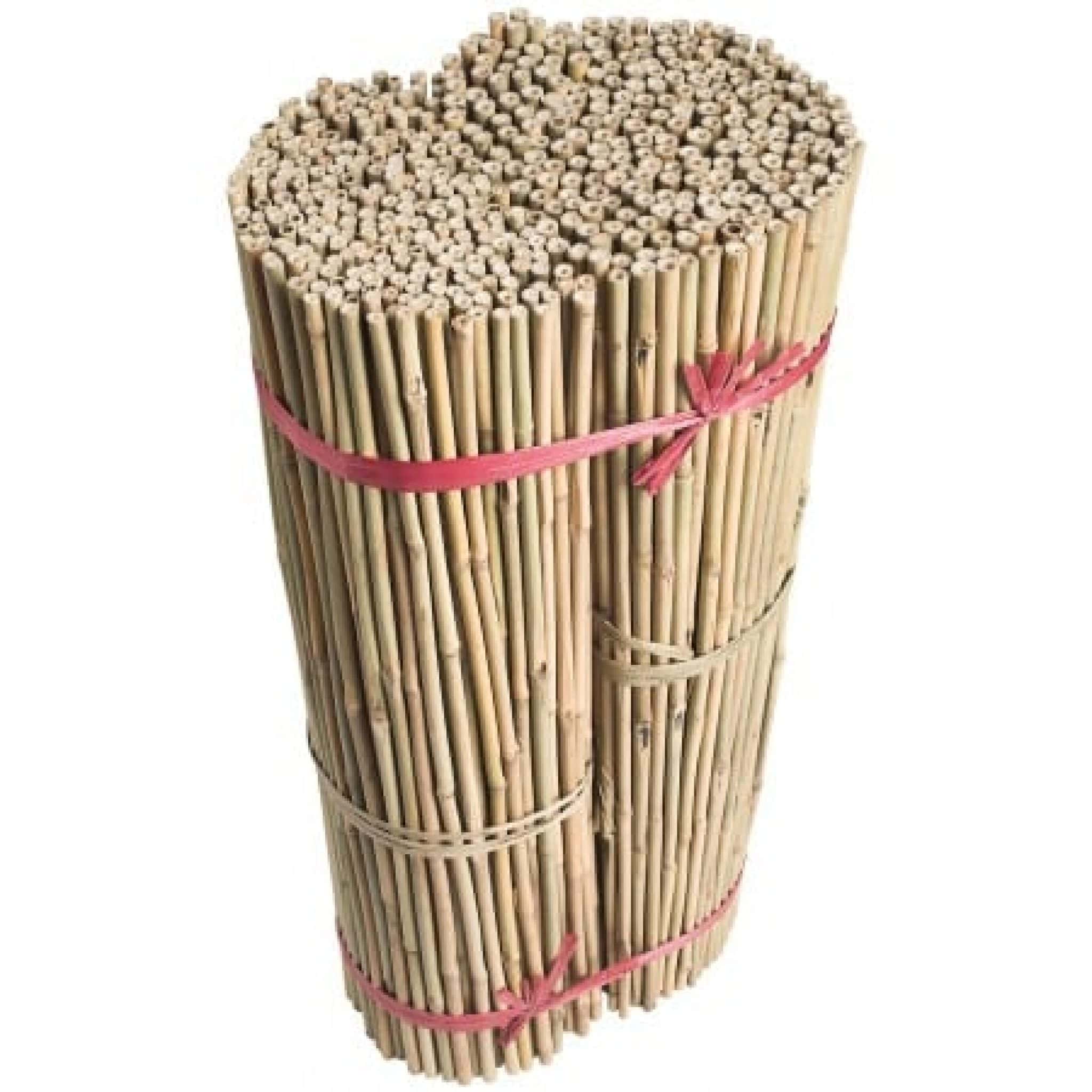5 Common Mistakes to Avoid When Using Bamboo Gardening Stakes
Bamboo gardening stakes are a popular choice for gardeners looking for an eco-friendly and cost-effective way to support their plants. Made from a highly renewable resource, these stakes are lightweight yet remarkably durable, making them an ideal option for everything from delicate blooms to heavy vegetable vines. However, even the most reliable garden tool can fail if not used properly. In this article, we’ll explore five common mistakes to avoid when using bamboo gardening stakes, helping you get the best possible results for your garden.

Mistake #1: Using the Wrong Size of Bamboo Gardening Stakes
Why Size Matters
One of the most frequent oversights gardeners make is choosing bamboo gardening stakes that are either too short or too thin for their plants. A stake that’s too flimsy can buckle under the weight of a growing tomato plant or climbing vine, while a stake that’s too large may look out of proportion and can even cause damage to delicate roots during installation.
Besides appearance, size plays a major role in the stake’s effectiveness. According to the National Gardening Association, plants like tomatoes or peppers can grow more than two feet high and require sturdy, stable supports. Using stakes that are too short could result in the plant toppling or bending under its own weight, leading to lower yields and potential plant stress.
Finding the Right Fit
To match your plant to the correct bamboo stake size:
- Measure Your Plant’s Height: Estimate the maximum height the plant is expected to reach. Choose a stake that extends at least 6–12 inches above that height to provide adequate support.
- Consider Stake Thickness: For robust tomato plants or climbing roses, thicker bamboo stakes (generally 1 inch or more in diameter) offer better support. For smaller herbs or flower stems, thinner stakes (½ inch or less in diameter) will suffice.
- Allow Room to Grow: Keep in mind that many plants experience rapid growth spurts. It’s better to choose a slightly larger stake upfront than to replace it mid-season.
Mistake #2: Improper Installation
Depth and Stability
Another common pitfall is not driving the bamboo stake deep enough into the ground. If a stake is merely anchored at the surface, it’s more likely to tilt or shift in strong winds or under the weight of heavy foliage.
Aim to insert the stake at least 6–8 inches into the soil for smaller plants. For taller or heavier plants, go deeper—10–12 inches is often recommended. The deeper the stake, the more stable it becomes, ensuring your plant stays upright.
Tying Techniques
Once you have chosen an appropriately sized bamboo stake and placed it firmly in the ground, the next step is securing your plant. Many gardeners tie their plant to the stake too tightly, causing stem damage or restricted growth. Use soft, flexible materials like garden twine, cloth strips, or rubber plant ties. A good rule of thumb is to leave enough room for the stem to move slightly without sagging.
To tie properly:
- Create a Figure-Eight Loop: Twist the tie between the stake and the stem so they don’t rub together.
- Allow Breathing Space: The loop should be snug enough to hold the plant but not so tight that it cuts off circulation.
Mistake #3: Not Considering Plant Growth
Adjusting Stake Position Over Time
Plants don’t just grow taller; they often branch out, flower, or develop heavier fruit. Failing to adjust the stake’s position or the ties as the plant grows can lead to bent or broken stems. It’s crucial to check your plants regularly and add extra ties if you notice the stems are starting to sag.
If your plant has outgrown its initial stake, you may need to swap in a taller bamboo gardening stake. It’s easier to change the stake before the plant becomes too large or heavy, preventing stress on the roots.
Overcrowding Concerns
Using multiple stakes to support multiple branches or neighboring plants can create a crowded area where air circulation is compromised. Poor air circulation can lead to fungal diseases or pest infestations. Strategically space your stakes (and plants) to promote airflow around the foliage, thus maintaining a healthier garden environment.
Mistake #4: Neglecting Proper Maintenance
Checking Stake Condition
Bamboo is strong and resilient, but it’s still an organic material that can degrade over time, especially when exposed to moisture and temperature fluctuations. Regularly inspect your bamboo stakes for signs of rot, splitting, or infestation by wood-boring insects.
Symptoms of compromised stakes include:
- Cracks or splits along the length
- Soft or spongy sections (indicative of rot)
- Sawdust-like residue (suggesting insect activity)
By catching these signs early, you can prevent structural failures that could harm your plants.
Replacing or Repurposing Worn Stakes
When you find a stake that’s too damaged to support a plant properly, it’s time to replace it. However, don’t discard it outright—bamboo can be repurposed. Shorten the stake and use it as a marker, or break it down into smaller pieces for crafting or composting if you’re sure it’s pest-free. Repurposing helps reduce waste and aligns with the eco-friendly spirit of bamboo gardening stakes.
Mistake #5: Overlooking Sustainable Practices
Source Responsibly
One of the greatest advantages of bamboo gardening stakes is their renewable nature. However, not all bamboo is harvested ethically or sustainably. Look for manufacturers or garden centers that source bamboo with minimal environmental impact—ideally those that have certifications or transparent supply chains.
Reusing and Recycling Bamboo Stakes
Part of sustainable gardening is making the most of your resources. Bamboo gardening stakes can last for multiple seasons if properly maintained and stored. Clean them with a mild bleach solution or natural soapy water at the end of each growing season to remove dirt or potential pathogens. Let them dry thoroughly in a sunny spot before storing. This simple practice can add years to your bamboo stakes’ lifespan, reducing the need to buy new ones.
Conclusion
Bamboo gardening stakes are a fantastic solution for plant support, but success depends on choosing the correct size, installing them properly, and keeping up with maintenance. By avoiding these five common mistakes, you’ll not only protect and nurture your plants but also extend the life of your stakes. Sustainable practices—such as sourcing bamboo responsibly and reusing stakes whenever possible—make a significant impact on your garden’s health and the environment.
Call to Action: Now that you’re armed with these tips, get out there and give your plants the support they need! If you found this article helpful, share it with fellow gardeners, leave a comment with your own bamboo gardening tips, and consider subscribing to our newsletter for more eco-friendly gardening insights.

